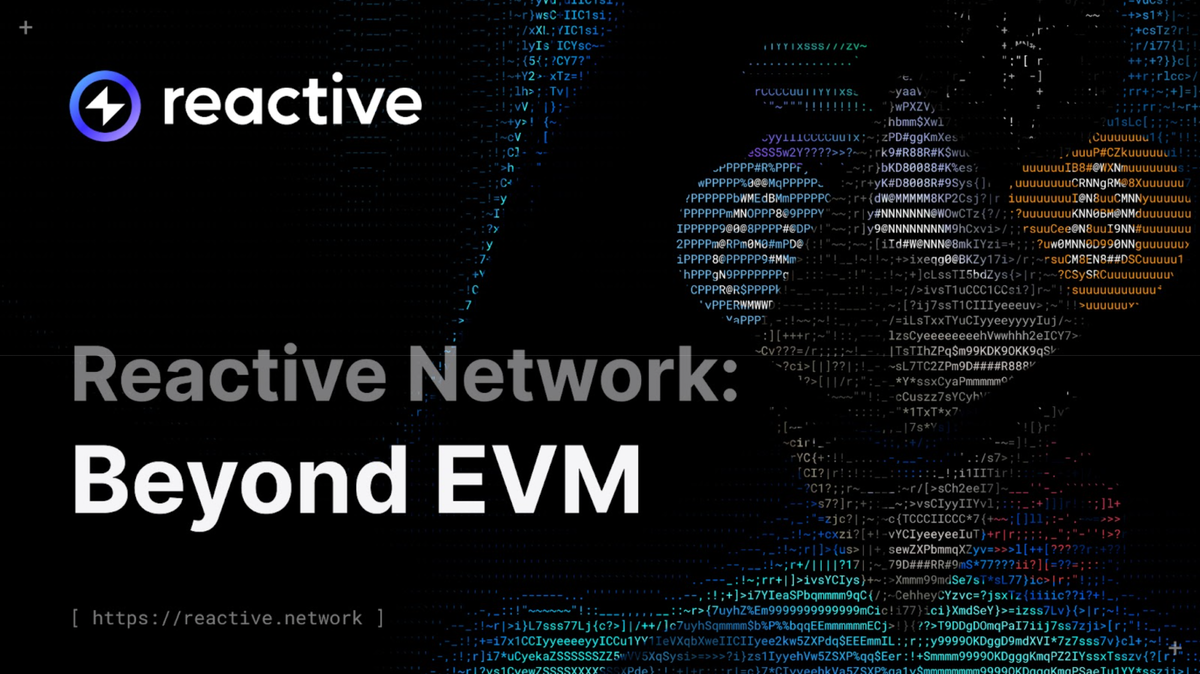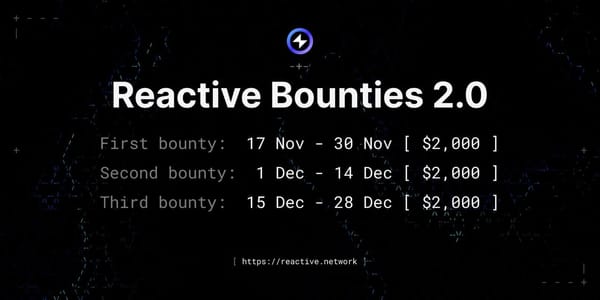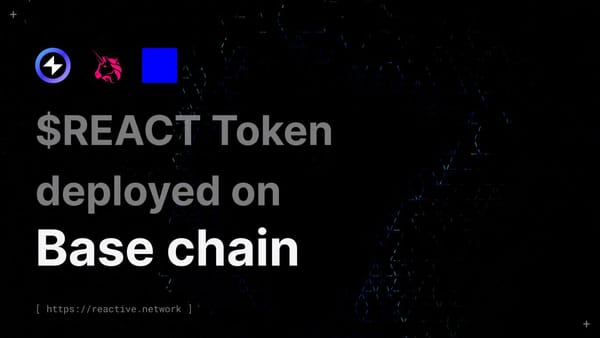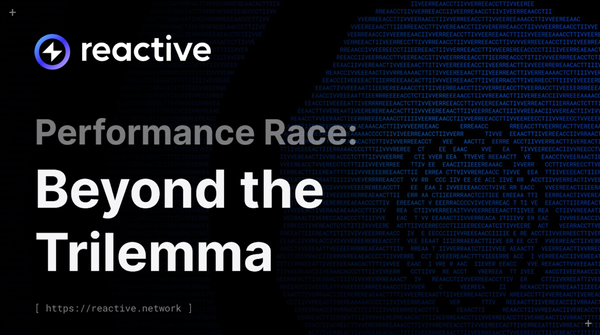Reactive Network: Beyond EVM

Earlier this year, just a month after Reactive Mainnet launch, we introduced Reactive's Sequencer, a component that has become the cornerstone of our technology stack. The Sequencer rollout addressed critical challenges in the existing architecture, particularly around the quality and consistency of incoming data streams from origin chains, effectively solving the consensus issues inherent to a blockchain powered not by user transactions, but by continuously evolving data streams.
While the primary goal of the Sequencer was to eliminate potential consensus issues, it accomplished far more than that. With the Sequencer, we paved the road for Reactive's continued development and expansion, enabling us to add new EVM chains with unprecedented ease, though naturally, this still requires thorough research on RPC partners and integration testing.
Today, Reactive is running smoothly, ingesting data from Ethereum, BNB Smart Chain, Avalanche, Base, Arbitrum, Sonic, HyperEVM, and Abstract chains. We currently produce and process around ten sequences per second which, depending on the time of day and chain activity, can translate to over 1,000 origin transactions per second. That's a significant achievement. What's even more impressive is that this barely scratches the surface of Reactive's potential throughput, we're currently operating at approximately 2-3% network utilization, leaving substantial room for expansion without requiring further architectural adjustments.
But today, we're looking toward Reactive's future and what we internally call Sequencer 2.0, an upcoming major update and milestone we've been planning since before the network's launch. This represents Reactive's expansion beyond EVM-based networks.
This next iteration of the Sequencer introduces a new sequence format called CustomSequence, enabling the network to ingest different types of data beyond event logs from EVM chains. While we still adhere to EVM's log structure and data types, this opens immense opportunities for on-chain data processing. Unlike EVMSequence, CustomSequence offers lower consistency guarantees to accommodate the processing of non-EVM data on an EVM chain.
But there's more. Sequencer 2.0 addresses another critical operational challenge, under the current setup, all data streamlined into Reactive must be integrated by the Reactive team directly. With this update, we're moving toward greater openness. While not yet fully permissionless, we're lifting the curtain on what has been the sacred foundation of Reactive Network: access to the data streams that give Reactive Smart Contracts their power. This allows protocol and blockchain developers, enthusiasts, hackathon participants, ecosystems, and foundations to become part of this massive data lake, bringing the most crucial on-chain data for their applications from anywhere.
We'll be sharing more details about this exciting step forward in the coming months. Stay tuned!
About Reactive Network
The Reactive Network, pioneered by PARSIQ, ushers in a new wave of blockchain innovation through its Reactive Smart Contracts (RSCs). These advanced contracts can autonomously execute based on specific on-chain events, eliminating the need for off-chain computation and heralding a seamless cross-chain ecosystem vital for Web3’s growth.
Central to this breakthrough is the Inversion of Control (IoC) framework, which redefines smart contracts and decentralized applications (DApps) by imbuing them with unparalleled autonomy, efficiency, and interactivity. By marrying RSCs with IoC, Reactive Network is setting the stage for a transformative blockchain era, characterized by enhanced interoperability and the robust, user-friendly foundation Web3 demands.
Website | Blog | Twitter | Telegram | Discord | Docs





